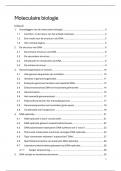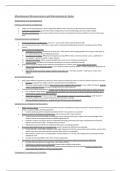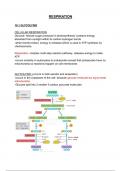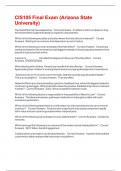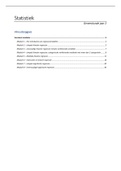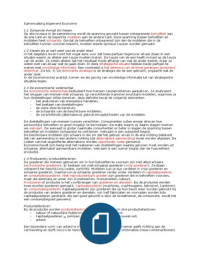COGNITIVE | GLOSSARY
Declarative memory: “Knowing what”) is the memory of facts and events and refers
to those memories that can be consciously recalled. There are two subsets of
declarative memory
Episodic memory: The memory of specific events that have occurred at a given
time and in a given place.
Procedural memory: (“Knowing how”) is the unconscious memory of skills and how
to do things.
Semantic memory: General knowledge of facts and people, for example, concepts
and schemas and it is not linked to time and place.
Transactive memory: A mechanism through which groups collectively encode,
store, and retrieve knowledge
Anchoring bias: An individual to rely too heavily on an initial piece of information
offered (known as the "anchor") when making decisions.
Availability heuristic: A mental shortcut that relies on immediate examples that
come to a given person's mind when making a decision.
Central Executive: The part of Baddeley & Hitch's Working Memory Model
responsible for the control and regulation of cognitive processes. It binds information
from a number of sources into a coherent "episode", coordinates the "slave
systems", shifts between tasks and handles selective attention and inhibition.
Cognitive misers: The tendency of people to think and solve problems in simpler
and less effortful ways rather than in a more sophisticated and more effortful ways,
regardless of intelligence.
Confabulation: A memory error which produces fabricated, distorted, or
misinterpreted memories about oneself or the world.
Displacement: In the MSM this is what happens to information in STM if it is not
rehearsed. It is displaced - or "knocked out" of the STM store by other incoming
stimuli.
Encoding: The initial learning of information by placing information into memory
storage.
Episodic buffer: The component of Baddeley & Hitch's Working Memory Model
dedicated to linking information across domains to form integrated units of visual,
spatial, and verbal information with time sequencing (or chronological ordering), such
as the memory of a story or a movie scene.
,Framing effect: When people react to a particular choice in different ways
depending on how it is presented.
Heuristic: A mental shortcut that allows people to solve problems and make
judgments quickly and efficiently.
Misinformation effect: When misleading information is incorporated into one's
memory after an event.
Peak-end Rule: People judge an experience largely based on how they felt at its
peak (i.e., its most intense point) and at its end, rather than based on the total sum
or average of every moment of the experience.
Phonological loop: The component of Baddeley & Hitch's Working Memory Model
responsible for processing auditory information.
Primacy effect/recency effect: Primacy and recency effect are two components of
the Serial Positioning Effect. Primacy effect results in a participant recalling
information presented earlier in a list of information better than information presented
later on. It is believed that covert rehearsal has already moved this information to
LTM. Recency effect results in a participant recalling information presented at the
end of a list of information better than information presented in the middle of a list. It
is believed that this is because the information is still in STM and has not been
displaced.
Retrieval: The ability to access information from memory when you need it.
Schema: Mental representations that are used to organize our knowledge, to assist
recall, to guide our behaviour, to predict likely happenings and to help us to make
sense of current experiences. Schemas are cognitive structures that are derived
from prior experience and knowledge. They simplify reality, setting up expectations
about what is probable in relation to particular social and textual contexts.
Visuospatial Sketchpad: The component of Baddeley & Hitch's Working Memory
Model which holds information about what we see. It is used in the temporary
storage and manipulation of spatial and visual information, such as remembering
shapes and colors, or the location or speed of objects in space. It is also involved in
tasks which involve planning of spatial movements, like planning one's way through
a building.
Working memory: Another term for Short-Term Memory, it is the system that
actively holds multiple pieces of transitory information in the mind, where they can be
manipulated. Baddeley & Hitch called it working memory because they wanted to
differentiate their concept from the "Memory Store Model" which made it appear that
STM was simply a temporary, passive store for information.
, Dual Process Model: Argues that there are two systems of decision making -
System 1 is an automatic, intuitive and effortless way of thinking. System 2 is a
slower, conscious and rational mode of thinking.
Flashbulb memory: Brown & Kulik’s theory that memories created as the result of
high levels of emotion – particularly surprise – are like “photographs.” The theory
argues that a lot of peripheral and irrelevant information is retained.
Multi Store Model: Proposed that memory consisted of three stores: a sensory
register, short-term memory (STM) and long-term memory (LTM).
Reconstructive memory : The theory that when memories are accessed, they are
not retrieved as a single, whole memory, but rather as a collection of independent
memories put together. It is in this “reconstructive process” that distortions occur .
Working memory model: The theory that short-term memory is not a single store
but rather consists of a number of different stores.
COGNITIVE | THEORIES + STUDIES
WORKING MODEL OF MEMORY
(LANDRY AND BARTLING + BADDELEY AND HITCH)
The working model of memory was created by Baddeley and Hitch and is the most
accepted model of memory. It suggests that short term memory is not a single store
and instead is made up of several stores:
Central Executive | Oversees and coordinates the other components, called slave
systems. It has the capacity to divide or switch attention, but has limited capacity. It
has two levels, the automatic which is based on habits and schema in long-term
memory, and the supervisory which deals with planning and decision making,
making new strategis when old ones no longer work.
Visuo-Spatial Sketchpad | Holds visual and spatial information temporarily. It
provides the virtual environment for calculation, visualisation and optical memory
recall.
Phonological Loop | Holds speech and auditory information temporarily. It has two
components, the articularly control system which can hold information in verbal form
and the phonological loop which holds auditory memory traces.
Episodic buffer | It integrates information from the other components temporarily
and maintains a sense of time so that events occur in a continuing sequence.
Evaluation
→ Supported by empirical evidence
→ Generated lots of research
→ Explains multitasking
Declarative memory: “Knowing what”) is the memory of facts and events and refers
to those memories that can be consciously recalled. There are two subsets of
declarative memory
Episodic memory: The memory of specific events that have occurred at a given
time and in a given place.
Procedural memory: (“Knowing how”) is the unconscious memory of skills and how
to do things.
Semantic memory: General knowledge of facts and people, for example, concepts
and schemas and it is not linked to time and place.
Transactive memory: A mechanism through which groups collectively encode,
store, and retrieve knowledge
Anchoring bias: An individual to rely too heavily on an initial piece of information
offered (known as the "anchor") when making decisions.
Availability heuristic: A mental shortcut that relies on immediate examples that
come to a given person's mind when making a decision.
Central Executive: The part of Baddeley & Hitch's Working Memory Model
responsible for the control and regulation of cognitive processes. It binds information
from a number of sources into a coherent "episode", coordinates the "slave
systems", shifts between tasks and handles selective attention and inhibition.
Cognitive misers: The tendency of people to think and solve problems in simpler
and less effortful ways rather than in a more sophisticated and more effortful ways,
regardless of intelligence.
Confabulation: A memory error which produces fabricated, distorted, or
misinterpreted memories about oneself or the world.
Displacement: In the MSM this is what happens to information in STM if it is not
rehearsed. It is displaced - or "knocked out" of the STM store by other incoming
stimuli.
Encoding: The initial learning of information by placing information into memory
storage.
Episodic buffer: The component of Baddeley & Hitch's Working Memory Model
dedicated to linking information across domains to form integrated units of visual,
spatial, and verbal information with time sequencing (or chronological ordering), such
as the memory of a story or a movie scene.
,Framing effect: When people react to a particular choice in different ways
depending on how it is presented.
Heuristic: A mental shortcut that allows people to solve problems and make
judgments quickly and efficiently.
Misinformation effect: When misleading information is incorporated into one's
memory after an event.
Peak-end Rule: People judge an experience largely based on how they felt at its
peak (i.e., its most intense point) and at its end, rather than based on the total sum
or average of every moment of the experience.
Phonological loop: The component of Baddeley & Hitch's Working Memory Model
responsible for processing auditory information.
Primacy effect/recency effect: Primacy and recency effect are two components of
the Serial Positioning Effect. Primacy effect results in a participant recalling
information presented earlier in a list of information better than information presented
later on. It is believed that covert rehearsal has already moved this information to
LTM. Recency effect results in a participant recalling information presented at the
end of a list of information better than information presented in the middle of a list. It
is believed that this is because the information is still in STM and has not been
displaced.
Retrieval: The ability to access information from memory when you need it.
Schema: Mental representations that are used to organize our knowledge, to assist
recall, to guide our behaviour, to predict likely happenings and to help us to make
sense of current experiences. Schemas are cognitive structures that are derived
from prior experience and knowledge. They simplify reality, setting up expectations
about what is probable in relation to particular social and textual contexts.
Visuospatial Sketchpad: The component of Baddeley & Hitch's Working Memory
Model which holds information about what we see. It is used in the temporary
storage and manipulation of spatial and visual information, such as remembering
shapes and colors, or the location or speed of objects in space. It is also involved in
tasks which involve planning of spatial movements, like planning one's way through
a building.
Working memory: Another term for Short-Term Memory, it is the system that
actively holds multiple pieces of transitory information in the mind, where they can be
manipulated. Baddeley & Hitch called it working memory because they wanted to
differentiate their concept from the "Memory Store Model" which made it appear that
STM was simply a temporary, passive store for information.
, Dual Process Model: Argues that there are two systems of decision making -
System 1 is an automatic, intuitive and effortless way of thinking. System 2 is a
slower, conscious and rational mode of thinking.
Flashbulb memory: Brown & Kulik’s theory that memories created as the result of
high levels of emotion – particularly surprise – are like “photographs.” The theory
argues that a lot of peripheral and irrelevant information is retained.
Multi Store Model: Proposed that memory consisted of three stores: a sensory
register, short-term memory (STM) and long-term memory (LTM).
Reconstructive memory : The theory that when memories are accessed, they are
not retrieved as a single, whole memory, but rather as a collection of independent
memories put together. It is in this “reconstructive process” that distortions occur .
Working memory model: The theory that short-term memory is not a single store
but rather consists of a number of different stores.
COGNITIVE | THEORIES + STUDIES
WORKING MODEL OF MEMORY
(LANDRY AND BARTLING + BADDELEY AND HITCH)
The working model of memory was created by Baddeley and Hitch and is the most
accepted model of memory. It suggests that short term memory is not a single store
and instead is made up of several stores:
Central Executive | Oversees and coordinates the other components, called slave
systems. It has the capacity to divide or switch attention, but has limited capacity. It
has two levels, the automatic which is based on habits and schema in long-term
memory, and the supervisory which deals with planning and decision making,
making new strategis when old ones no longer work.
Visuo-Spatial Sketchpad | Holds visual and spatial information temporarily. It
provides the virtual environment for calculation, visualisation and optical memory
recall.
Phonological Loop | Holds speech and auditory information temporarily. It has two
components, the articularly control system which can hold information in verbal form
and the phonological loop which holds auditory memory traces.
Episodic buffer | It integrates information from the other components temporarily
and maintains a sense of time so that events occur in a continuing sequence.
Evaluation
→ Supported by empirical evidence
→ Generated lots of research
→ Explains multitasking

